

Living with chronic pain is incredibly difficult, just ask anyone with piriformis syndrome. The chronic muscle pain from piriformis syndrome can be so excruciating that many people see sleep as the only escape.
But on top of that, sleeping with piriformis syndrome is no easy task either. Aside from affecting you all throughout the day, piriformis syndrome can also get in the way of a good night’s sleep. Luckily, there are a couple of things you can do to get over the hump and sleep the whole night through, even with piriformis syndrome.
In this guide, we explain how to sleep with piriformis syndrome through various tricks and methods. And by the end, you’ll understand exactly what you need to do at the end of the day to get the much-needed rest you deserve.
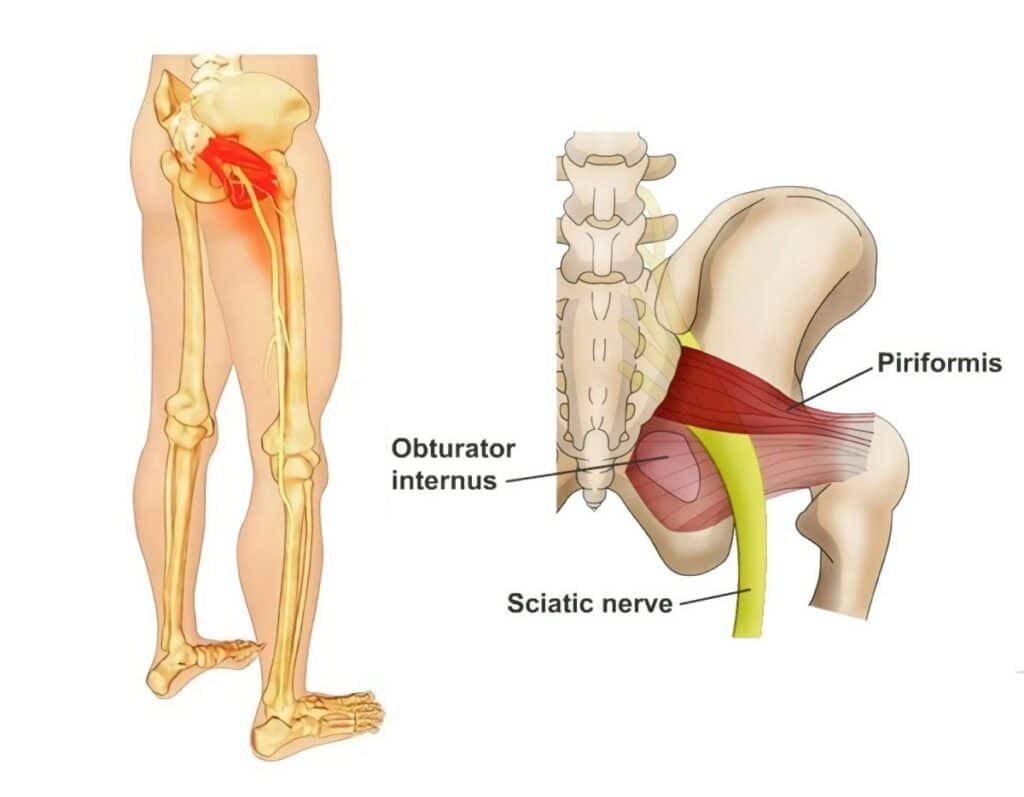
As the name suggests, piriformis syndrome affects the piriformis muscle you can find near the buttocks and the hip joint. When you suffer from piriformis syndrome, your piriformis muscle compresses the sciatic nerve Trusted Source Piriformis Syndrome: Symptoms, Causes, Treatments, Exercises, and More WebMD explains the symptoms, causes, and treatments of piriformis syndrome. www.webmd.com , which can cause a variety of symptoms such as tingling, numbness, and pain in the buttocks.
Piriformis syndrome is an uncommon disorder, so not many people have it. But those who do can experience pain throughout the entire sciatic nerve. The sciatic nerve, which is the largest nerve in the human body Trusted Source Sciatic Nerve and Sciatica A number of physical, chemical, and mechanical factors can affect the sciatic nerve, causing sciatica. www.spine-health.com . This nerve passes through the buttocks all the way to the heel and sole of your foot.
Remember, piriformis syndrome is different from sciatica. Piriformis syndrome can occur due to a number of different reasons. These can include injuries, irritation of the piriformis, scoliosis and abnormal spine alignment, difference in leg length, and even prior hip surgery.
The pain that piriformis syndrome causes can be very intense, and it isn’t something you would want to wish on anyone. It affects your day-to-day life, and in many cases, it can even affect your sleeping patterns, which can cause even more problems.
While the pain from piriformis syndrome may seem impossible to handle at times and can even prevent you from sleeping, all is not lost. There are many different things you can do to improve your sleep from choosing the right mattress to sleeping in the right positions.
Here are some of the best ways to sleep with piriformis syndrome;
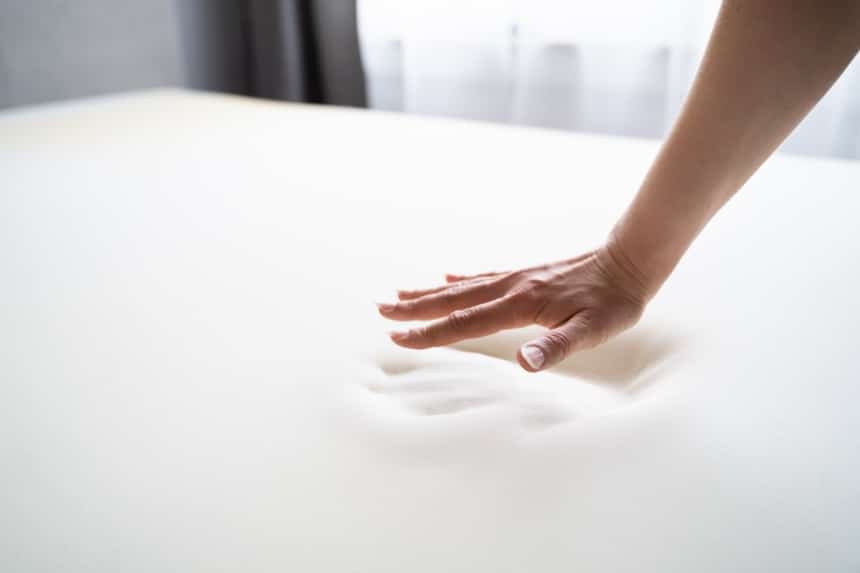
When trying to learn how to sleep comfortably with piriformis syndrome, it’s very important that you choose the right mattress. Sleeping with piriformis syndrome is very hard, but it can be much easier if you have the right mattress.
Managing the pain is the first step to handling piriformis syndrome, and to do that, you need the right type of bed. Keep in mind, everyone has different sleeping habits and positions, so there isn’t “one mattress to rule them all” that can help all people with piriformis syndrome. However, if you sleep on the wrong mattress, it can result in severe muscular pain and joint pain.
The right mattress for you largely depends on your height, weight, and sleeping position. And with the right mattress, you can improve your sleep quality by keeping your spine aligned and maximizing comfort. If you’re a back sleeper struggling to find the right bed for you, you might want to read up on the best mattresses for back sleepers on the market today.
Many experts recommend using a medium-firm mattress for optimal spinal alignment. However, you’d also need one that is custom-inflated. Regardless of the mattress you choose, it’s important to keep support and comfort as top priorities.
And based on our research, we’ve found that the Pressure Relief Olive Oil Memory Foam Mattress is the best for sleeping with piriformis syndrome.
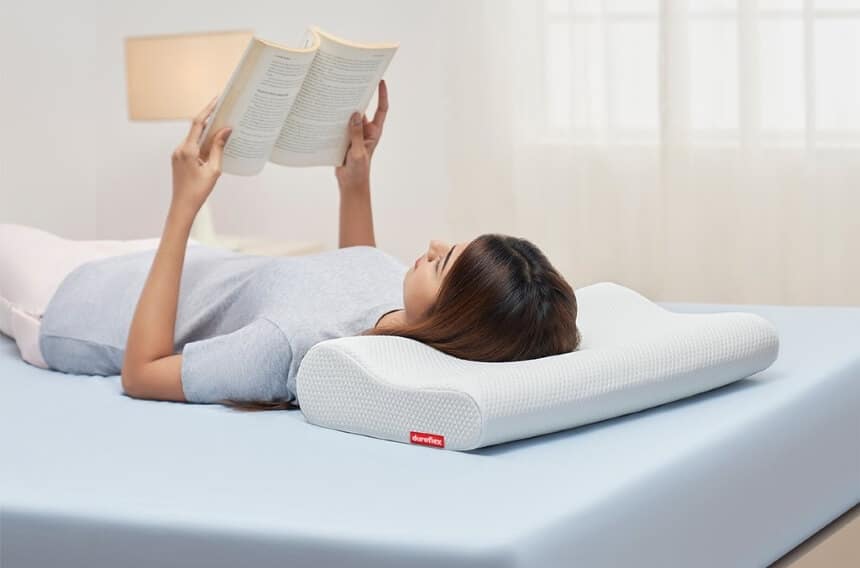
There are two main factors to take into account when sleeping with piriformis syndrome. We’ve already discussed the mattress. Now it’s time to look at the second factor: your pillow. Many people aren’t aware that your pillows actually play a big role in keeping your spinal alignment during sleep and preventing back pain.
With the right pillow, you can alleviate pain and promote proper spinal alignment during sleep. For people struggling with piriformis syndrome, we highly recommend using an orthopedic pillow. Orthopedic pillows are ideal for those with back problems and do a better job than memory foam or goose-down pillows.
However, just like mattresses, the type of pillow largely depends on your own sleeping style and other personal preferences. For example, if you need a pillow that stays cool the entire night while also promoting spinal alignment, we found that the Nolah AirFoam Pillow works wonders.
Back-sleepers are best fitted with a medium-thin pillow under their head, a cervical pillow, and a couple of pillows under their knees for proper alignment. Side sleepers need a medium-thick pillow and could benefit from placing a pillow between their knees as they sleep, while stomach sleepers are best no pillow at all. However, stomach-sleeping isn’t ideal for the back, and we highly recommend stomach-sleepers start transitioning to different positions.
As you can probably tell, different people need different pillows. To learn more about the different options, you can check out this list of the best pillows for any need or purpose.
On top of choosing the right mattress and pillow, you also need to choose the right piriformis syndrome sleeping position. Your sleeping position, along with your height and weight, dictates the kind of mattress and pillow you need to get a full and comfortable night’s rest.
Most people fall under three different sleeping positions, while some move around in their sleep and don’t lay in one single position. And since the sleeping position is key to getting good sleep with piriformis syndrome, here are the most common ones;
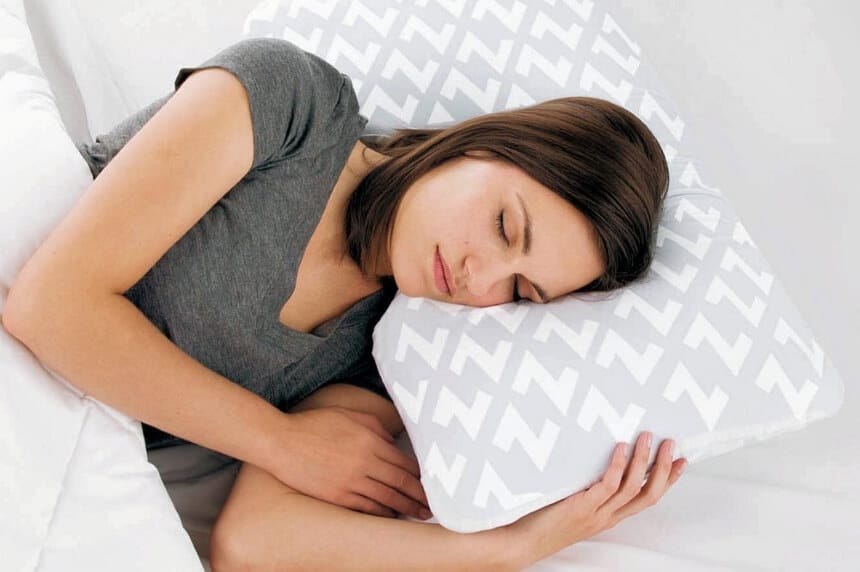
For most people, sleeping on your side is the best option there is. When you sleep on your side, you keep your airways open, making it ideal for those with sleep apnea. When it comes to spinal alignment, side sleeping puts you in a great position where your spine and body are aligned.
Since it keeps your spine aligned, many people consider side sleeping to be one of the best sleeping positions for those with piriformis syndrome. Additionally, this is a great position for pregnant women as it offers the best back support.
While side sleeping is one of the top choices for many sleepers, there are still a couple of things to keep in mind to enhance it and sleep easy with piriformis syndrome. When you sleep, try to keep your legs as straight as possible, or at most, slightly bent. This improves your circulation and the alignment of your spine. And for even more spinal support, which is key in sleeping with piriformis syndrome, we recommend tucking your chin into your neck.
Among the most popular sleeping positions out there, back sleeping offers the best spinal support. If you suffer from back pain or piriformis syndrome, this is the best sleeping position for you. When you lay flat on your back, you get the most support possible from your mattress, which can greatly reduce back pain.
This is the most recommended sleeping position for people suffering from piriformis syndrome, though it isn’t recommended for pregnant women. Additionally, there are many people that find it hard to sleep on their backs, which is why most people resort to sleeping on their sides. Back sleeping can also obstruct air flow, so it isn’t recommended for snorers and those with sleep apnea.
If you want to relieve the pain caused by piriformis syndrome, we highly recommend sleeping on your back. And if you find that difficult to do, we recommend trying out different types of pillows to put you in the most comfortable position possible.
Sleeping on your stomach is very bad for your back, so most experts don’t recommend this. If you suffer from piriformis syndrome and sleep on your stomach, we highly advise you to transition away from this position slowly. While it might be hard, it results in great relief for your back almost instantly.
However, if you can’t switch to a different position there are a couple of things to do to alleviate the pressure stomach sleeping puts on your back. For starters, we recommend using a thin pillow or no pillow at all to keep your spine aligned. Additionally, you could also put a pillow under your stomach while you sleep to keep your back from forming a U-Shape.
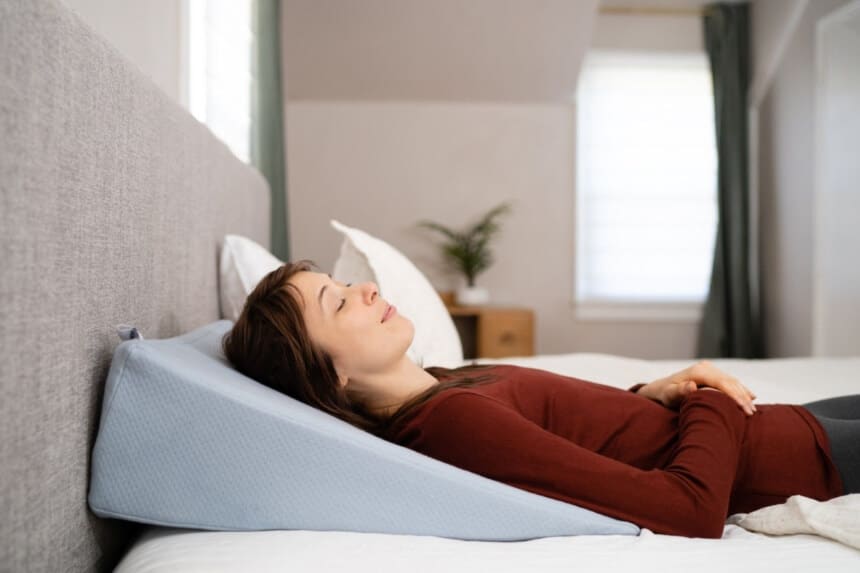
This isn’t the most common sleeping position out there, but if you feel that the pain worsens when you stand up straight than leaning forward, we highly recommend this. While reclined sleeping positions can be great for the back and for people with piriformis syndrome, it can be hard to accomplish.
To sleep in this position, you need either an adjustable bed or a reclining chair. Not everyone has access to these things, so it can be tough to start making the switch. However, if you don’t have an adjustable bed or reclining chair, you can also try out a wedge pillow to put you in this position when sleeping. This is one of the best ways to sleep with piriformis syndrome, however, it requires a different set of equipment that not everyone has access to.
It can be hard to get through the chronic back pain that piriformis syndrome causes. Proper sleeping positions, the right mattress, and a good pillow can only get you so far. There are other things you can do on a daily basis, either while going throughout your day or right before you head to bed, that can also help with piriformis syndrome.

Piriformis syndrome and back pain can be caused by straining the muscles in your back. You can hurt your muscles by developing tension, which can be caused by poor posture. Standing up straight and practicing good posture all the time has a lot of benefits, such as making you look taller, improving circulation, and alleviating back pain.
And if you suffer from piriformis syndrome, we highly recommend practicing good posture as much as possible. This includes standing up straight, sitting down properly, and generally keeping your back strong and free from tension.
If you work a job where you have to sit down at a desk for a long time, proper posture is even more important. The human body isn’t designed to sit down, and spending long periods of time on a chair can really hurt your back. So, on top of practicing proper posture, it could also help to get your hands on a quality chair that promotes a healthy back.
Another great way to alleviate back pain is with stretches. Since back pain and piriformis syndrome can be worsened by tension, stretching your muscles is a great way to release the tension Trusted Source Ask Dr. Rob about piriformis syndrome - Harvard Health Piriformis syndrome is a painful condition that develops due to irritation or compression of the sciatic nerve near the piriformis muscle. www.health.harvard.edu . Stretching has shown to be great at reducing back pain, promoting spinal alignment, and decreasing muscle stiffness, which are all very important factors for people suffering from piriformis syndrome.
Before you sleep, try out gentle stretches that target the piriformis. Studies have shown that a couple of months of regular stretching can work wonders on your sleep cycle. Remember, you have to be gentle when stretching, especially when it comes to your back. You don’t want to shock your muscles and risk injury, which can happen to those with piriformis syndrome.
On top of stretching the piriformis muscle, you can also try out releasing tension in your hips and quads through gentle stretching. Many people who have a hard time sleeping with piriformis syndrome report an easier time falling asleep when they practice regular gentle stretches right before sleeping.

Warm showers are known to reduce pressure and muscle tension. So, it should go without saying that taking warm showers can be a great way to reduce the pain caused by piriformis syndrome. A warm bath or shower not only relaxes your muscles but can “slow down” your body and get you in a more calm and relaxed state.
Piriformis pain can also be caused by poor circulation. When your body is exposed to warm water, your circulation improves, and you might find that the pain is slowly disappearing. If you have trouble sleeping with piriformis syndrome, we suggest taking a warm shower right before sleeping to help relax your muscles.
If you suffer from back pain caused by piriformis syndrome or sciatica, remember that your core plays a big role in supporting your spine as well. So, a couple of core exercises included in your daily routine could do you a lot of good. Remember, it isn’t advised to exercise and work out your muscles while they hurt, so it’s best to do this when your back feels all right to help improve your posture.
Weak core muscles put more pressure on your spine whenever you walk, sit, or even lay down. While you won’t notice this at the start of the day, they will slowly appear, and by the end of the day, you might suffer from intense back pain. To prevent this, you can strengthen your core through a variety of exercises.
Remember to start slowly and gently with the exercise to reduce the risk of accidentally injuring yourself. Another advantage of core exercises is that they can also help you get in shape along with improving your posture!

Magnesium is a natural muscle relaxant. Many people who have trouble sleeping at night report that magnesium supplements help them sleep better. However, remember to always talk to your doctor about taking a new supplement, especially if you’ve never taken magnesium before.
If your piriformis syndrome is really starting to affect your sleep and you don’t know what to do, the best thing is always to consult a professional. Your doctor will have a clear idea of the situation and understand how it applies to your own personal health needs.
If you notice that the pain gets worse after a couple of days and you really can’t get any sleep, then a visit to the doctor is necessary.
Remember, only professional doctors can diagnose accurately and prescribe you the right treatments. So, if you haven’t visited a doctor since the pain started, we highly recommend doing so as they can provide proper treatment that can help alleviate the symptoms.
Living with piriformis syndrome is very difficult and can get in the way of a lot of different aspects of your life. Aside from making it hard to do certain physical activities in the day and hurting constantly, piriformis syndrome can also get in the way of your sleep patterns, which can cause even more health issues.
If you’re having a hard time calling it a day because of your piriformis syndrome, we highly recommend trying out the tips and methods we listed in this guide. Figuring how to sleep with piriformis syndrome can be hard, especially if you’ve never felt it before.
However, sleeping with piriformis syndrome can be done, and there are many people living through their piriformis pain and getting a good night’s sleep through the methods we mentioned above. There are many things you can do such as changing your mattress, pillows, or sleeping position, but we highly recommend trying out multiple methods to alleviate the pain and allow you a full night’s rest!





